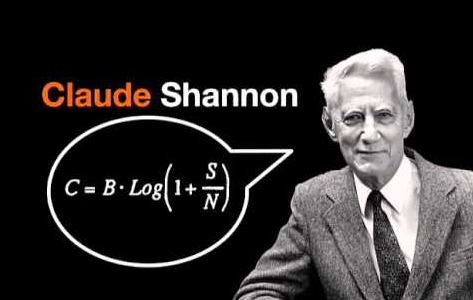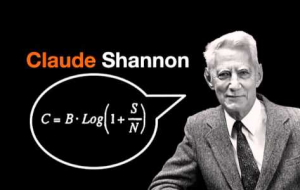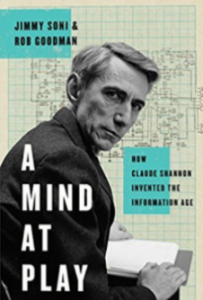
Ideas that change the world in numbers

Small-town Michigan boy, Claude Shannon, a brilliant thinker and digital pioneer, making the discovery of a dry theory that created history was fundamental for the information age. The Mathematical Theory of Communication and its publication in the late 1940s was followed by a wave of popular interest, as in the early 20th century including Mid-western thinkers who went on to lay the foundations for the computer era. Shannon’s life often reclusive, but always playful genius.
Although Shannon’s boyhood passions were mechanical, his interest in mathematics made him come up with the ultimate abstraction of the information age, the ones and the zeros of the digital technology.
21-year-old Shannon’s master’s thesis, was the first to see the possibility of reducing logic to a series of instructions that could be processed by simple electrical components, represented by switches. A Mind at Play invoked the wonder that an idea can inspire.
His breakthrough came a decade later, when he was working for Bell Labs, the AT&T research arm, a telephone company when he found out information can be separated from both the meaning of a particular message and the medium over which it is transmitted. Any message, either a moving image or a spoken sentence or a piece of text could be reduced to a code expressed in binary digits.
So it is not surprising that Claude’s information theory of trying to solve a communication problem, reducing the logic to a series of instructions that could be processed by simple electrical components.
Information moving through analogue world faced limitations, as interferences on a phone line degraded signals and also the amount of information that can be transmitted is limited by the capacity of the line.
Converting information into binary code, which included digital compression, the technique that makes it possible to send today’s digital video signals over limited bandwidths.
Elegantly written and exhaustively researched biography by Soni and Goodman managed to make key ideas and succeeded in focusing on the man behind the theory.
Maths prodigy Shannon lived more than 50 years longer, to see the information age become a reality.
Other inventions occupied Shannon’s attention like an electronic gadget to win at roulette, a paper on the mathematics of juggling, a mouse designed to find its way out of a desktop maze and several mechanical devices.
Shannon’s ability to engage with any problem that intrigued him to play intellectually, and comes up with solutions which underpin the modern world.
A Mind at Play: How Claude Shannon Invented the Information Age by Jimmy Soni and Rob Goodman Simon & Schuster $27, 384 pages


